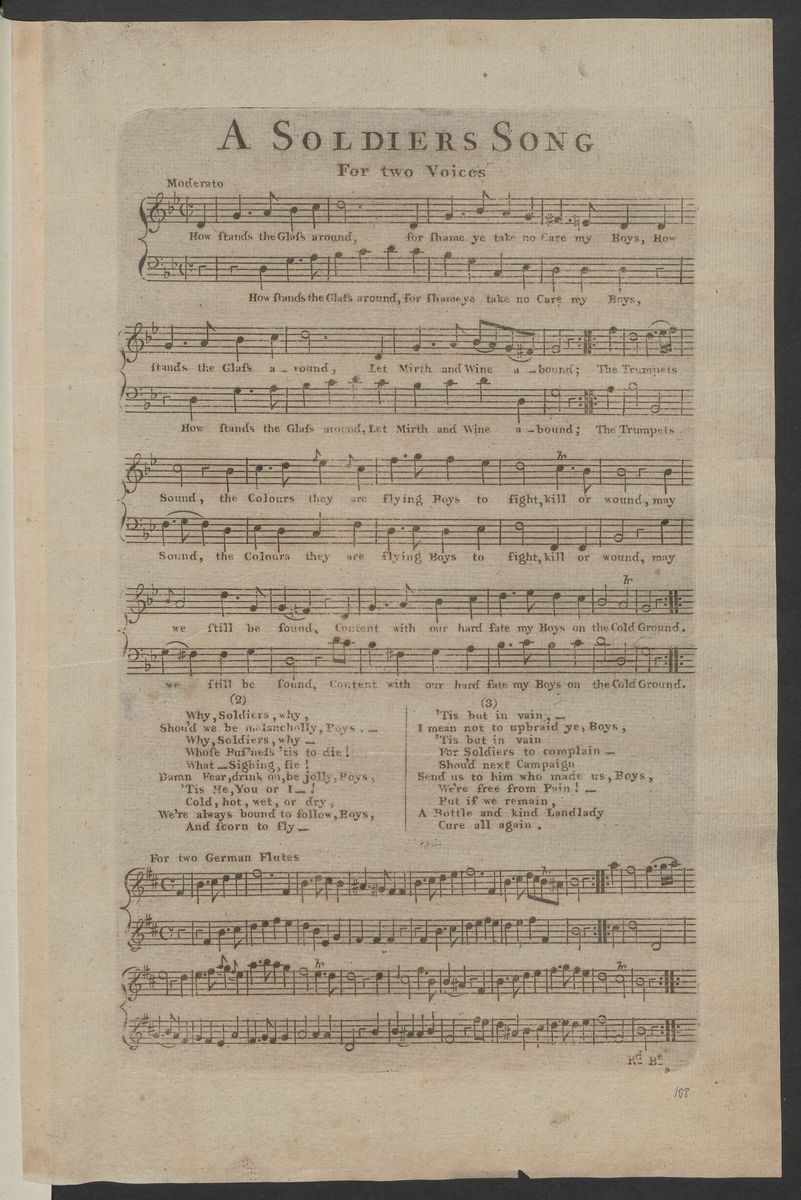Howard, Samuel: A soldiers song : for two voices / [vermutl. von Samuel Howard]. - [London] : B[rid]e, [ca. 1765]. - [1] Bl. -
Text-Incipit: How stands the glass around. -
Der Song beschreibt, nicht ohne kritischen Unterton, das Leben von Soldaten, "deren Geschäft es ist zu sterben", und die sich mit Alkohol über die Härten ihres Lebens hinweghelfen. Das Notenblatt enthält die Stimmen für Gesangsduo; am Ende steht außerdem eine Version für zwei Flöten. Das Blatt ist überliefert im sog. "Pleasure-Gardens-Konvolut", einer Sammlung von überwiegend gedruckten Notenblättern, wie sie in den Londoner Vergnügungsparks in der Mitte des 18. Jahrhunderts verwendet wurden. Das Blatt wurde von Richard Bride gedruckt, dessen Erzeugnisse vorrangig in Finch’s Grotto Gardens, einem der weniger bedeutenden Londoner Vergnügungsparks gesungen wurden.
en









